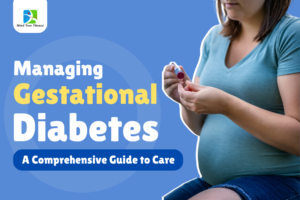Palm oil consumption and it’s effects on blood lipid levels and cardiovascular disease (CVD) in humans is still a subject of debate. Advocacy groups with varying agenda (most with no knowledge of human nutrition, biochemistry and physiology) fuel the controversy.
Most of the (mis)information is targeted at consumers and food companies with a view to discourage the consumption of palm oil. However, there are many scientific studies, both in animals and humans that clearly show that palm oil consumption does not give rise to elevated serum cholesterol levels and that palm oil is not atherogenic (causing atherosclerosis or blocking arteries).
Apart from palmitic acid which is a saturated fatty acid (SFA), palm oil consists of monounsaturated (MUFA) and polyunsaturated fats (PUFA), vitamins A and E, which are powerful antioxidants. It has been scientifically shown to protect the heart and blood vessels from plaques and ischemic injuries.
Let’s dig deeper!
What is palm oil?
Palm oil is a unique vegetable oil. The palm fruit has a fleshy mesocarp from which palm oil is derived and a seed from which palm kernel oil is derived. These are two different types of oil and this article is concerned with the former only.
It’s native to Africa, Malaysia, Brazil, and Indonesia. Palm oil is semisolid at room temperature and can be fractionated into palm olein (liquid fraction) and palm stearin (solid fraction).
Applications in the food industry
Palm oil and it’s fractions have increasingly been used as an alternative to partially hydrogenated fats (industrial trans fats).
Unique characteristics like high natural solid fat content which does not need hydrogenation, high oxidative stability (long shelf life), melting point of 32-40℃, structural hardness, competitive price, constant supply allow it’s use in diverse food applications.
Presently the supply of genetic-modification-free palm oil is assured at economic prices, since it is a perennial crop with unparalleled productivity.
The natural solid fat fraction of palm oil called palm stearin is a suitable trans fat free ingredient in many food products.
Vanaspati
Vanaspati was traditionally manufactured through the process of partial hydrogenation of palm oil (Dalda) which was rich in trans fats. Trans fats are bad for health. Today, Dalda claims to be trans fat free as per the FSSAI standards.
It is now manufactured by interesterification of palm oil and til (sesame) oil.
Interesterification refers to a chemical or enzymatic process that rearranges the fatty acids on the glycerol backbone of a triglyceride molecule (dietary fat), in either a random or a specific way.
The altered structure of the fat or rearrangement can confer useful functional characteristics, including a higher melting point and altered crystalline structure, and typically increases the solid content of a fat.
This method was used in order to eliminate industrial trans fats in finished food products and also reduce the saturated fat content by blending two or more fats and oils.
Are interesterified fats healthy?
Short term human studies show no adverse effects. Long term studies are ongoing.
This has nothing to do with the health effects of palm oil alone and it’s natural fractionated liquid derivative (palm olein).
However, there are serious concerns that palm oil is not nutritionally ideal and that the intake of palm oil has negative effects on lipid profiles due to it’s high SFA content.
Let’s look at recent data:
A review article studied the effects of palm olein with other oils on serum lipids in healthy adults.
It searched MEDLINE and CENTRAL: Central Register of Controlled Trials from 1975 to January 2018 for randomized controlled trials of ≥2 wk intervention that compared the effects of palm olein with other oils such as coconut oil, lard, canola oil, sunflower oil, olive oil, peanut oil, and soybean oil on changes in serum lipids.
Nine studies were eligible and were included, with a total of 533 and 542 subjects on palm olein and other dietary oil diets, respectively. The study extracted and compared all the data for serum lipids, such as total cholesterol (TC), LDL cholesterol, HDL cholesterol, triglyceride, and TC/HDL cholesterol ratio.
Overall, there were no significant differences in the effects of palm olein intake on lipoprotein biomarkers compared with other saturated fatty acid rich oils. In fact, dietary palm olein was found to have effects comparable to those of other unsaturated dietary oils (MUFA and PUFA–rich oils) with respect to the serum lipid profile in healthy adults.
Composition of Palm Oil:
Palm oil has almost equal amounts of SFAs (mainly palmitic acid 44–45%) and unsaturated fatty acids (oleic acid 39–40%, the one found in olive oil).
The low percentage of linoleic acid (n-6 fatty acid) and high proportion of vitamins A and E make it more stable against oxidative deterioration during food preparation. Refining lowers the levels of these vitamins however.
Fatty acid comparison:
| Oil | Saturated fat % | MUFA % |
| Coconut | 90 | 6 |
| Ghee | 50 | 21 |
| Palm oil | 50 | 44 |
| Olive | 14 | 73 |
So why does palm oil have a bad reputation?
1. Saturated fat and heart disease link:
The influence of dietary fats on heart disease risk has traditionally been estimated from their effects on total and LDL cholesterol.
Following large epidemiologic studies in the 50’s and 60’s, saturated fats gained a bad reputation in terms of being significantly associated with heart disease. This informed various guideline recommendations to reduce saturated fats in a bid to decrease the prevalence of heart disease.
The concern about palm oil sprung mainly because it contains palmitic acid, which is a saturated fatty acid.
The association between SFAs and CVD as reported in the literature is inconclusive. The effect of SFAs from plant sources (e.g., palm oil, coconut oil, cocoa butter) on CVD risk reported inconsistent findings especially with regard to palm oil.
Yes, saturated fats do increase total and LDL cholesterol but hey also increase HDL cholesterol improving the ratio of total cholesterol to HDL.
Apoprotein B (apo B) is the new marker for assessing heart disease risk that is used with standard lipid tests.
Saturated fat consumption increases apo B levels in susceptible individuals. However, a high carbohydrate diet can also increase apo B, LDL and triglyceride levels increasing CVD risk.
So the net effect depends on the presence of carbohydrates in the diet and the individual’s current health condition and health risk.
2. Environment
To meet increased demands, large areas of tropical forests and other ecosystems with high conservation values have been cleared to make room for palm plantations. This has destroyed critical habitat for many endangered species. Burning forests to make room for the crop is also a major source of greenhouse gas emissions. Intensive cultivation methods result in climate change, air pollution, soil erosion and water contamination.
The boycott or substitution of palm oil (or other vegetable oils) does not offer long-term solutions to the challenges we face. Exchanging palm oil with other oils can actually worsen the problems.
It is by far the highest yielding oil crop. Substitution of palm oil with other oils such as soybean, rapeseed and sunflower can therefore require significantly more land to produce the same volume. This could potentially cause greater harm to wildlife, habitats and the environment.
Finally, future demand for palm oil can be met without further forest and ecosystem conversion, notably by sustainably increasing productivity on existing plantations and expanding plantations to degraded land.
All companies that use palm products must ensure that their own supply chain is sustainable and free from deforestation and conversion of natural ecosystems.
Environment conscious consumers can:
• Support sustainable palm oil and explain to friends, families, and others why this is a better approach than boycotting palm oil.
• Use the Palm Oil Buyers Scorecard to see how well their favourite retailers, manufacturers, and food service companies are doing on palm oil.
• Share the scorecard on social media.
• Contact the brands through their social media channels and ask them to: make commitments, join RSPO (Roundtable on Sustainable Palm Oil), and purchase 100% physical certified sustainable palm oil.
Where does India stand with palm oil consumption?
To boost the edible oil production and attain self-sufficiency, one of the long-term strategies undertaken by the Indian government is promotion of palm oil production through oil palm cultivation.
Studies conducted to evaluate the nutritional and health implications of substituting other oils with palm olein show that despite having low linoleic acid, the use of palm oil may not adversely affect the linoleic acid status of Indian population.
Substitution of groundnut oil with palm olein in cereal based lactovegetarian diets providing about 30 per cent total fat calories, doubles the saturated fatty acids and reduces by half the linoleic acid content. The effects of this substitution in volunteers from the middle income group did not raise serum cholesterol and aggregability of platelets indicating that palm oil may not produce the deleterious effects associated with saturated fatty acids.
The tocols (Vitamin E family) present in palm oil are natural biological antioxidants and can therefore augment the antioxidant potential of Indian diets.
Red palm oil is the richest natural source of carotenes which are also powerful antioxidants. The major carotene in red palm oil is beta-carotene. Therefore, red palm oil can be used to prevent vitamin A deficiency which is widespread in India.
Is palm oil healthy in the context of a typical Indian diet?
Studies suggest that palm olein does not behave like a SFA-rich fat due to its non cholesterolemic effects in healthy adults whose total fat intakes are within the recommended 30–35% of energy range.
When ingested, oleic acid is hydrolyzed in the stomach, and absorbed intact as monoglycerides into the blood circulation. Therefore, a palm olein diet containing more SFAs than other liquid vegetable oils does not affect blood cholesterol and lipid profile adversely when compared with MUFA- or PUFA-rich diets.
But we do know that saturated fat intake combined with a high intake of carbohydrates (typical Indian diet) can be of concern.
High intake of carbohydrates in the absence of high saturated fat intake is also of concern as India inches it’s way into being the world’s diabetes capital. Hence the saying: Don’t blame the butter for what the bread did! Or in this case don’t blame palm oil for what the potato or the paratha did!!
Recently a potato chip brand used the tagline: “NO PALM OIL”. Does that make it healthy?? Not at all.
High carbohydrate containing foods like potato chips (even if baked) in the absence palm oil have the capacity to raise blood sugar levels, bad cholesterol levels, increase oxidative stress, inflammation and risk of heart disease specially in high risk individuals.
Takeaway:
The most underrated endurance sport they say is keeping your mind open.
Let’s do away with old beliefs and assimilate what current studies tell us about palm oil.
It’s a healthy oil and it will be healthier to consume it as part of a low carbohydrate diet.
REFERENCES
1. Ong AS, Goh SH. Palm oil: a healthful and cost-effective dietary component. Food Nutr Bull. 2002 Mar;23(1):11-22. https://pubmed.ncbi.nlm.nih.gov/11975364/
2. Voon PT, Lee ST, Ng TKW, Ng YT, Yong XS, Lee VKM, Ong ASH. Intake of Palm Olein and Lipid Status in Healthy Adults: A Meta-Analysis. Adv Nutr. 2019 Jul 1;10(4):647-659. https://www.ncbi.nlm.nih.gov/pmc/articles/PMC6628844/
3. Ghafoorunissa. Nutrition & health implications of palm oil in Indian diets. Indian J Med Res. 1995 Nov;102:233-40. https://pubmed.ncbi.nlm.nih.gov/8675244/
4. Turley ML, Skeaff CM, Mann JI, Cox B. The effect of a low-fat, high-carbohydrate diet on serum high density lipoprotein cholesterol and triglyceride. Eur J Clin Nutr. 1998 Oct;52(10):728-32. https://pubmed.ncbi.nlm.nih.gov/9805219/
5. Odia OJ, Ofori S, Maduka O. Palm oil and the heart: A review. World J Cardiol. 2015 Mar 26;7(3):144-9. https://www.ncbi.nlm.nih.gov/pmc/articles/PMC4365303/
6. Kaja Falkenhain, Lauren A Roach, Sara McCreary, Eric McArthur, Ethan J Weiss, Monique E Francois, Jonathan P Little, Effect of carbohydrate-restricted dietary interventions on LDL particle size and number in adults in the context of weight loss or weight maintenance: a systematic review and meta-analysis, The American Journal of Clinical Nutrition, Vol114, Issue 4, 2021,Pg 1455-1466. https://www.sciencedirect.com/science/article/pii/S0002916522004749
7. Siri PW, Krauss RM. Influence of dietary carbohydrate and fat on LDL and HDL particle distributions. Curr Atheroscler Rep. 2005 Nov;7(6):455-9. https://pubmed.ncbi.nlm.nih.gov/16256003/
8. Andrew Mente, Mahshid Dehghan, Sumathy Rangarajan Et al., Association of dietary nutrients with blood lipids and blood pressure in 18 countries: a cross-sectional analysis from the PURE study, Lancet Diabetes Endocrinol 2017; 5: 774–87 https://www.thelancet.com/pdfs/journals/landia/PIIS2213-8587(17)30283-8.pdf
9. Mensink RP, Sanders TA, Baer DJ, Hayes KC, Howles PN, Marangoni A. The Increasing Use of Interesterified Lipids in the Food Supply and Their Effects on Health Parameters. Adv Nutr. 2016 Jul 15;7(4):719-29. https://www.ncbi.nlm.nih.gov/pmc/articles/PMC4942855/#:~:text=Che
10. S. E. Berry, J. H. Bruce, S. Steenson Et al., Interesterified fats: What are they and why are they used? A briefing report from the Roundtable on Interesterified Fats in Foods 2019 Oct 23 https://onlinelibrary.wiley.com/doi/full/10.1111/nbu.12397#:~:text=Inter





